Non-stick cookware offers easy food release and low-fat cooking, while stainless steel provides durability and excellent heat conductivity. Both have unique benefits and drawbacks to consider based on your cooking style.
Non-Stick vs Stainless Steel:Choosing between non-stick cookware and stainless steel can significantly impact your culinary experience. Non-stick pans are ideal for low-fat cooking and ease of use, making them perfect for beginners and busy cooks. They require less oil and are easier to clean, but they can wear out over time.
Stainless steel, on the other hand, is known for its durability and ability to withstand high heat, making it suitable for searing and browning. While it may require more oil and can be challenging to clean, it lasts longer and doesn’t chip or scratch. Understanding these pros and cons will help you make an informed decision for your kitchen.
Introduction To Non-stick And Stainless Steel Cookware
Choosing the right cookware can change your cooking experience. Two popular options are non-stick and stainless steel. Each has unique features and benefits. Understanding these can help you make the best choice for your kitchen.
Popular Materials In Modern Kitchens
Cookware materials play a big role in cooking. Here are some common types:
| Material | Pros | Cons |
|---|---|---|
| Non-Stick |
|
|
| Stainless Steel |
|
|
The Rise Of Health-conscious Cooking
Many people now focus on healthy cooking. This affects cookware choices. Non-stick options need less oil. This can help reduce fat intake.
On the other hand, stainless steel is free of harmful chemicals. It’s safer for high-heat cooking. Many chefs prefer it for its versatility.
Your choice should match your cooking style and health goals. Consider what you cook most often. Think about your family’s needs. This will help you choose the right cookware.
Credit: www.reddit.com
The Making Of Non-stick Cookware
Non-stick cookware is popular for easy cooking and cleaning. Understanding its making helps in choosing the right type. This section explores the material composition and manufacturing process.
Material Composition And Coating
Non-stick cookware primarily uses two materials:
- Base Material: Usually aluminum or stainless steel.
- Coating: Polytetrafluoroethylene (PTFE) or ceramic.
Aluminum is lightweight and heats quickly. It distributes heat evenly. Stainless steel is durable and resists rust. It offers a sleek look.
The coating creates the non-stick surface. PTFE is famous for its excellent non-stick properties. Ceramic coatings are eco-friendly and less toxic.
Process Of Manufacturing
The manufacturing process of non-stick cookware involves several steps:
- Shaping: The base material is shaped into pans.
- Cleaning: Each piece is cleaned to remove impurities.
- Priming: A primer layer is applied for better adhesion.
- Coating: The non-stick coating is sprayed or rolled on.
- Heating: Cookware is heated to cure the coating.
- Quality Check: Each piece is inspected for defects.
This process ensures that the non-stick surface is durable and effective. Proper manufacturing increases the lifespan of the cookware.
| Material | Properties | Coating Type |
|---|---|---|
| Aluminum | Lightweight, heats quickly | PTFE, Ceramic |
| Stainless Steel | Durable, rust-resistant | PTFE, Ceramic |
Knowing the making of non-stick cookware helps in making better choices. Choose wisely for healthy cooking.
Anatomy Of Stainless Steel Pans
Understanding the anatomy of stainless steel pans helps in selecting the right cookware. These pans are popular for their durability and performance. Knowing their components can lead to better cooking experiences.
Alloy Components And Finishes
Stainless steel pans are made from various alloys. The key components include:
- Iron: The primary element in stainless steel.
- Chromium: Adds corrosion resistance.
- Nickel: Improves durability and shine.
- Molybdenum: Enhances strength and resistance to rust.
The finishes of stainless steel pans can vary:
- Polished Finish: Provides a shiny look.
- Satin Finish: Offers a matte appearance.
- Brushed Finish: Resists scratches and fingerprints.
Crafting Durable Cookware
Manufacturers use different techniques to craft stainless steel pans. Key methods include:
- Cold-rolled: Increases strength and durability.
- Hot-forged: Enhances heat distribution.
- Welded handles: Ensures strong connections.
High-quality stainless steel pans often feature:
- Thick bases: For even heating.
- Riveted handles: For extra strength.
- Induction compatibility: Works on induction cooktops.
Understanding these components helps in selecting the best stainless steel cookware for your kitchen.
Credit: www.reddit.com
Cooking Performance Compared
Understanding how non-stick cookware and stainless steel perform is crucial. Each type has unique features that can affect your cooking experience. Let’s explore heat distribution, retention, and versatility in the kitchen.
Heat Distribution And Retention
Heat distribution impacts how evenly food cooks. Here’s how both types compare:
| Cookware Type | Heat Distribution | Heat Retention |
|---|---|---|
| Non-Stick Cookware | Even distribution, perfect for delicate foods. | Poor retention, cools quickly. |
| Stainless Steel | Uneven at first but improves with thicker bases. | Excellent retention, stays hot longer. |
Non-stick cookware works best for low-heat cooking. It’s ideal for eggs or pancakes. Stainless steel suits high-heat cooking. It browns and sears meat effectively.
Versatility In The Kitchen
Versatility refers to how well each cookware type adapts to different cooking methods. Here’s a breakdown:
- Non-Stick Cookware:
- Great for frying and sautéing.
- Not suitable for high-heat methods.
- Can’t use metal utensils.
- Stainless Steel:
- Perfect for browning, boiling, and baking.
- Compatible with all utensils.
- Safe for high-heat cooking.
Non-stick cookware shines in everyday cooking. Stainless steel excels in professional kitchens.
Ease Of Use And Maintenance
Choosing between non-stick cookware and stainless steel involves understanding ease of use and maintenance. Each type has unique features that affect how you cook and clean.
Cleaning And Care Routines
Cleaning non-stick cookware is simple and quick. A soft sponge and mild detergent work best. Avoid harsh scrubbers. This prevents damage to the non-stick surface. Here are some cleaning tips:
- Wash with warm, soapy water.
- Use soft sponges.
- Dry immediately to avoid moisture buildup.
Stainless steel requires a bit more effort. Food can stick, leading to tougher stains. Use these cleaning methods:
- Soak in warm, soapy water.
- Use a non-abrasive scrubber.
- For tough stains, use baking soda paste.
Both types are generally dishwasher safe. Non-stick items may last longer with hand washing.
Durability Over Time
Durability varies greatly between these materials. Non-stick cookware can wear out. The coating can scratch and peel. Proper care extends its life.
Stainless steel is known for its strength. It resists scratches and dents. This means it can last for many years. Here’s a quick comparison:
| Cookware Type | Durability | Care Required |
|---|---|---|
| Non-Stick | Medium (5-10 years) | Gentle cleaning, avoid metal utensils |
| Stainless Steel | High (20+ years) | Regular cleaning, occasional polishing |
Choosing the right cookware impacts cooking and maintenance. Consider how often you cook. Think about how much time you want to spend cleaning.
Health And Safety Concerns
Choosing the right cookware impacts your health. Non-stick and stainless steel each have unique safety aspects. Understanding these concerns helps in making informed decisions.
Chemical Leaching And Toxicity
Non-stick cookware often contains chemicals like PTFE and PFOA. These chemicals can leach into food. Leaching can happen at high temperatures.
- PTFE (Teflon): Safe at low temperatures.
- PFOA: Linked to health risks; phased out in many products.
Stainless steel is generally safer. It doesn’t leach harmful substances. However, nickel allergies can affect some people.
| Cookware Type | Chemical Risks | Safety Level |
|---|---|---|
| Non-Stick | PTFE, PFOA | Moderate |
| Stainless Steel | None | High |
Safe Cooking Practices
Using cookware safely is vital. Follow these tips for safe cooking:
- Use non-stick pans at medium heat.
- Avoid metal utensils on non-stick surfaces.
- Choose high-quality stainless steel for durability.
- Regularly check for scratches or damage.
- Clean cookware according to manufacturer instructions.
Stainless steel requires less caution. It’s sturdy and can handle high heat. Always ensure proper ventilation while cooking.
Cost Analysis And Affordability
Understanding the cost of cookware helps you make smart choices. This section explores the financial aspects of both non-stick and stainless steel cookware. Knowing the initial costs and long-term values can guide your decision.
Initial Investment Vs. Long-term Value
The initial investment for non-stick cookware is often lower. You can find quality sets for under $100. Stainless steel cookware tends to cost more upfront. A good set can start at around $200.
Consider the long-term value of each type:
- Non-Stick Cookware: Requires replacement every few years. Frequent use may lead to wear and tear.
- Stainless Steel Cookware: More durable and can last a lifetime. Proper care maintains its appearance and functionality.
Here’s a quick cost comparison:
| Cookware Type | Initial Cost | Longevity |
|---|---|---|
| Non-Stick | Under $100 | 3-5 years |
| Stainless Steel | Starting at $200 | 20+ years |
The Impact Of Branding On Price
Branding plays a big role in cookware pricing. Well-known brands often charge more. This reflects their reputation and quality assurance.
Here’s how branding impacts cost:
- High-End Brands: Premium prices with advanced features.
- Mid-Range Brands: Affordable yet good quality options.
- Budget Brands: Lower prices, but may lack durability.
Choose wisely based on your budget. A higher price does not always guarantee better quality. Balance cost with your cooking needs.
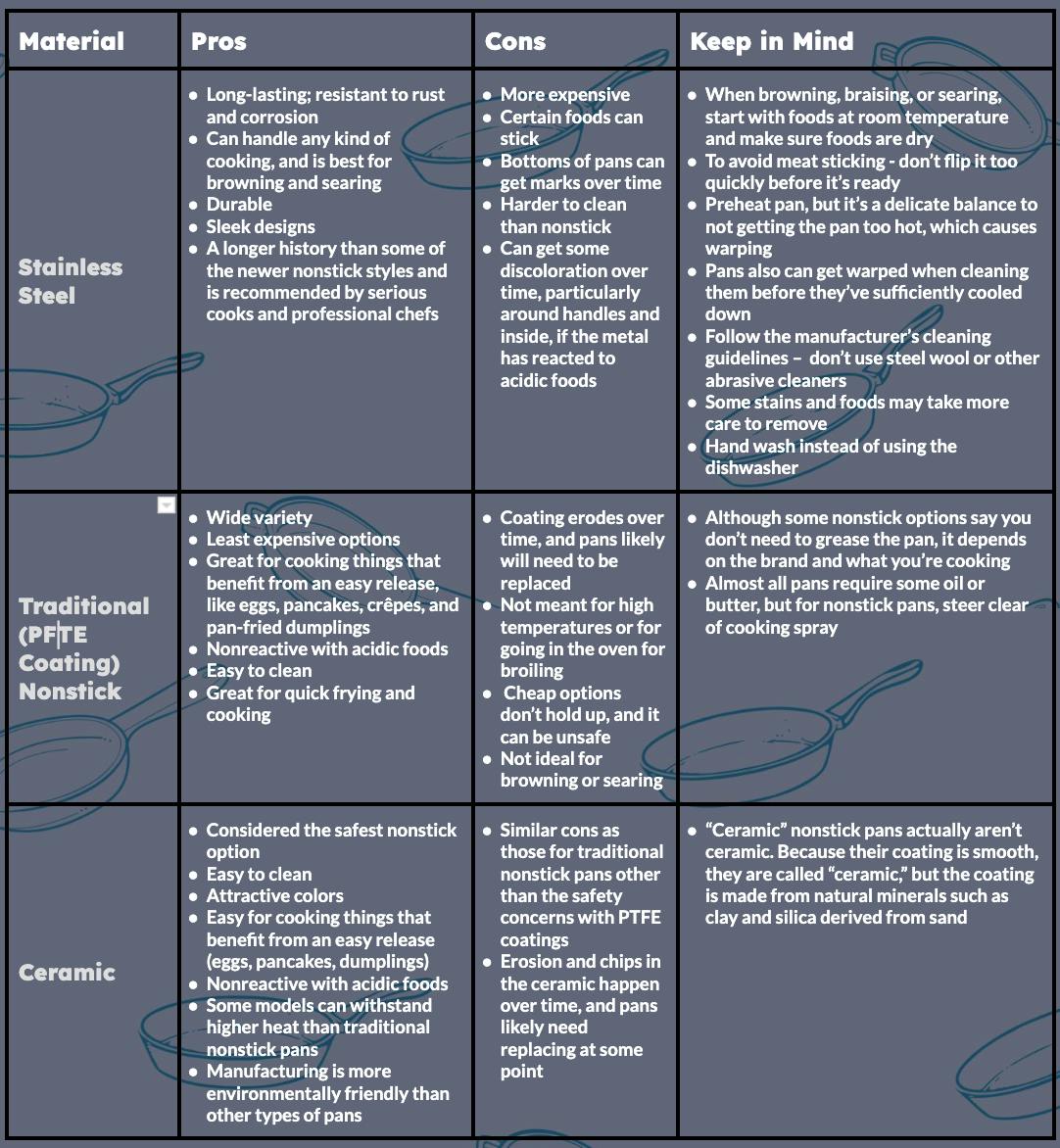
Credit: www.curated.com
Environmental Impact And Sustainability
Choosing between non-stick cookware and stainless steel involves considering their environmental impact. Each material affects our planet differently. This section explores their life cycles, recycling options, and disposal methods.
Life Cycle Of Cookware Materials
The life cycle of cookware includes the following stages:
- Raw Material Extraction: Non-stick cookware often uses synthetic chemicals. Stainless steel relies on metal ores.
- Manufacturing: Non-stick coatings may release harmful fumes. Stainless steel production requires significant energy.
- Usage: Non-stick pans need careful handling. Stainless steel is durable and long-lasting.
- End-of-Life: Non-stick cookware can degrade over time. Stainless steel can last for decades.
Recycling And Disposal Considerations
Recycling options differ greatly for these materials:
| Cookware Type | Recyclability | Disposal Method |
|---|---|---|
| Non-Stick Cookware | Limited; often not recyclable | Landfill; hazardous waste if damaged |
| Stainless Steel | Highly recyclable | Recycling centers; scrap metal yards |
Choose wisely to minimize environmental impact. Stainless steel promotes sustainability. Non-stick options may create waste and pollution. Understanding these factors helps make informed choices.
The Professional Chef’s Perspective
Professional chefs often choose cookware based on performance and durability. Their choices influence their cooking style and efficiency. Two popular options are non-stick cookware and stainless steel. Each type has unique benefits and drawbacks. Understanding these can help home cooks make better decisions.
Preferences In Commercial Kitchens
In busy commercial kitchens, chefs prioritize speed and efficiency. Here’s how they view both cookware types:
| Cookware Type | Pros | Cons |
|---|---|---|
| Non-Stick Cookware |
|
|
| Stainless Steel |
|
|
Expert Tips For Home Cooks
Professional chefs have valuable insights for home cooks. Here are some expert tips:
- Choose Non-Stick for Quick Meals: Use non-stick for simple dishes.
- Invest in Quality Stainless Steel: Look for thick, heavy-bottomed pans.
- Preheat Properly: Always preheat stainless steel to prevent sticking.
- Use the Right Utensils: Avoid metal utensils on non-stick surfaces.
- Maintain Your Cookware: Clean stainless steel with vinegar to remove stains.
Understanding these tips can enhance your cooking experience. Both cookware types serve different needs. Choose based on your cooking style and preferences.
Consumer Reviews And Testimonials
Understanding consumer experiences helps in choosing between non-stick cookware and stainless steel. Reviews reveal how these options perform in real kitchens.
Real-life Experiences With Non-stick And Stainless Steel
Many people share their thoughts on both types of cookware. Here are some common themes:
- Non-stick cookware: Users love its easy cleanup.
- Stainless steel: Many appreciate its durability and versatility.
- Some find non-stick surfaces scratch easily.
- Others mention that stainless steel requires more oil to prevent sticking.
Here are a few specific testimonials:
“I enjoy cooking eggs on my non-stick pan. Cleanup is a breeze!”
“My stainless steel pots last forever. They heat evenly, too!”
Best-rated Products On The Market
Finding the right cookware can be overwhelming. Here is a table of some top-rated options:
<td=“cuisinart”></td=“cuisinart”>
| Cookware Type | Brand | Rating | Price |
|---|---|---|---|
| Non-Stick | Tefal | 4.7/5 | $29.99 |
| Stainless Steel | 4.8/5 | $79.99 | |
| Non-Stick | GreenPan | 4.6/5 | $49.99 |
| Stainless Steel | All-Clad | 4.9/5 | $149.99 |
These options are popular among consumers. They offer reliability and performance.
Making The Decision: Which Is Right For You?
Choosing between non-stick cookware and stainless steel can be tough. Each option has unique benefits. Understanding your cooking style helps in making the right choice. Below, we explore your needs and preferences.
Assessing Your Cooking Style And Needs
Think about how you cook. Consider these questions:
- Do you cook delicate foods like eggs or pancakes?
- Do you often sauté or sear meats?
- Do you prefer low-fat cooking methods?
- How much time do you want to spend on cleaning?
Here’s a quick comparison of both types:
| Feature | Non-Stick Cookware | Stainless Steel |
|---|---|---|
| Ease of use | Very easy | Moderate |
| Durability | Less durable | Highly durable |
| Versatility | Limited | Very versatile |
| Health aspect | Potential chemical concerns | Safe and healthy |
| Cooking technique | Best for low-fat cooking | Great for browning and deglazing |
Non-stick cookware is great for quick meals. It helps avoid sticking. Use it for frying eggs or pancakes.
Stainless steel shines in versatility. It handles high heat well. Perfect for browning meats or making sauces.
The Final Verdict In The Non-stick Vs Stainless Steel Debate
Deciding on cookware depends on your cooking habits. If you want easy cooking, choose non-stick. It’s perfect for low-fat meals.
For those who enjoy cooking techniques, stainless steel is better. It offers durability and versatility.
Consider your lifestyle. Choose the option that fits your kitchen needs.
Frequently Asked Questions
What Are The Benefits Of Non-stick Cookware?
Non-stick cookware offers easy food release and simple cleanup. It requires less oil, making meals healthier. These pans are great for cooking delicate items like eggs and pancakes. However, they may not withstand high heat and can scratch easily, limiting their durability compared to other materials.
Is Stainless Steel Cookware Worth The Investment?
Yes, stainless steel cookware is durable and long-lasting. It heats evenly, ensuring consistent cooking results. Unlike non-stick, it can withstand high temperatures and is dishwasher safe. However, it may require more oil for cooking and can be more challenging to clean.
It’s an excellent investment for serious cooks.
How Does Heat Retention Differ Between Both Types?
Stainless steel retains heat better than non-stick cookware. This property allows for even cooking and browning. Non-stick pans heat quickly but lose heat rapidly. For searing meats or achieving a crispy texture, stainless steel is preferable. Each type has its specific cooking advantages based on heat retention.
Can Non-stick Cookware Be Used On High Heat?
Non-stick cookware is not recommended for high heat. High temperatures can damage the non-stick coating and release harmful fumes. For best results, use medium to low heat settings. Always refer to the manufacturer’s guidelines for safe cooking practices to maintain the integrity of your non-stick pans.
Conclusion
Choosing between non-stick cookware and stainless steel depends on your cooking style and preferences. Non-stick pans excel in easy cleanup, while stainless steel offers durability and versatility. Consider your needs, cooking habits, and budget. Ultimately, both options have unique benefits that can enhance your culinary experience.
Make an informed choice for your kitchen.

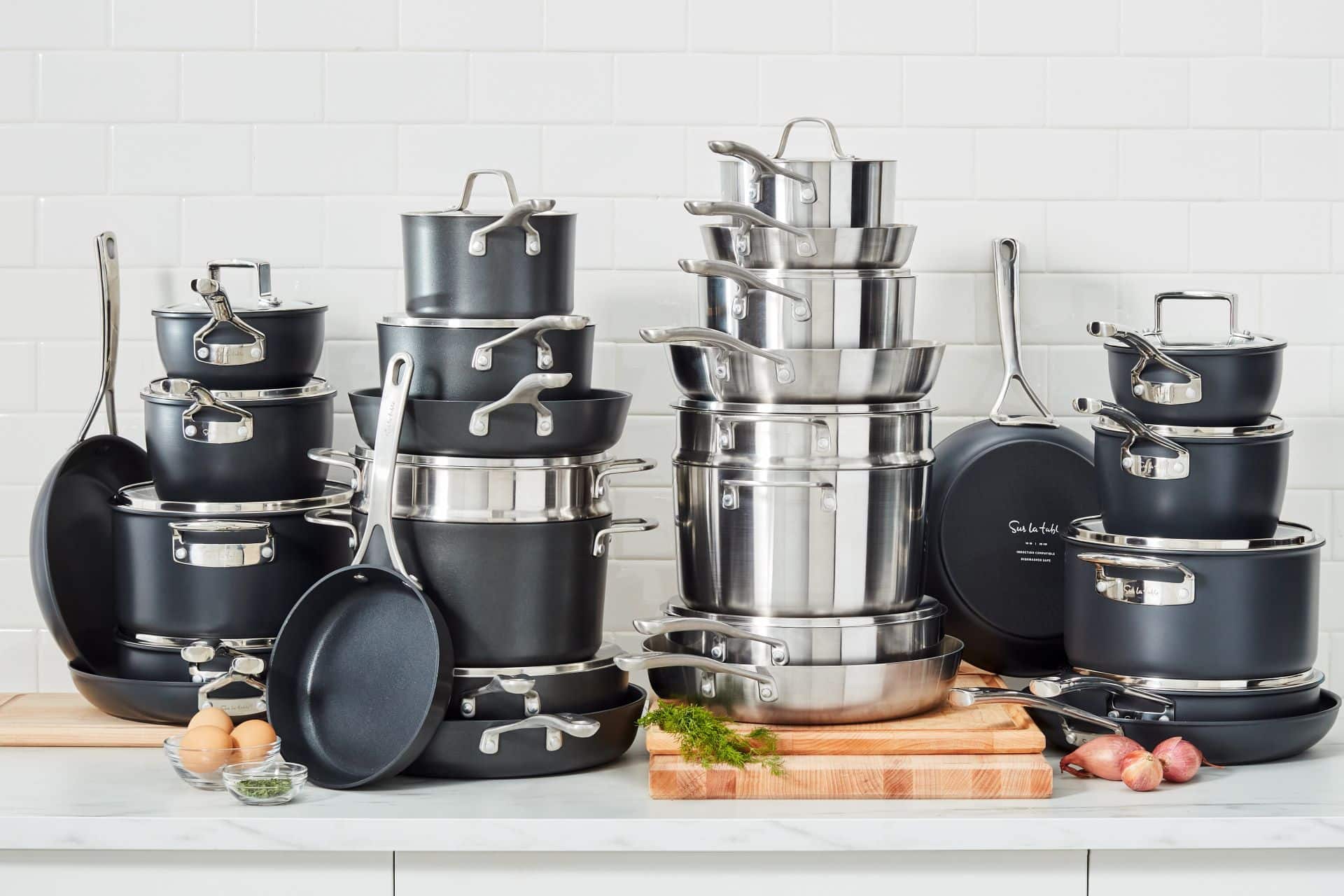
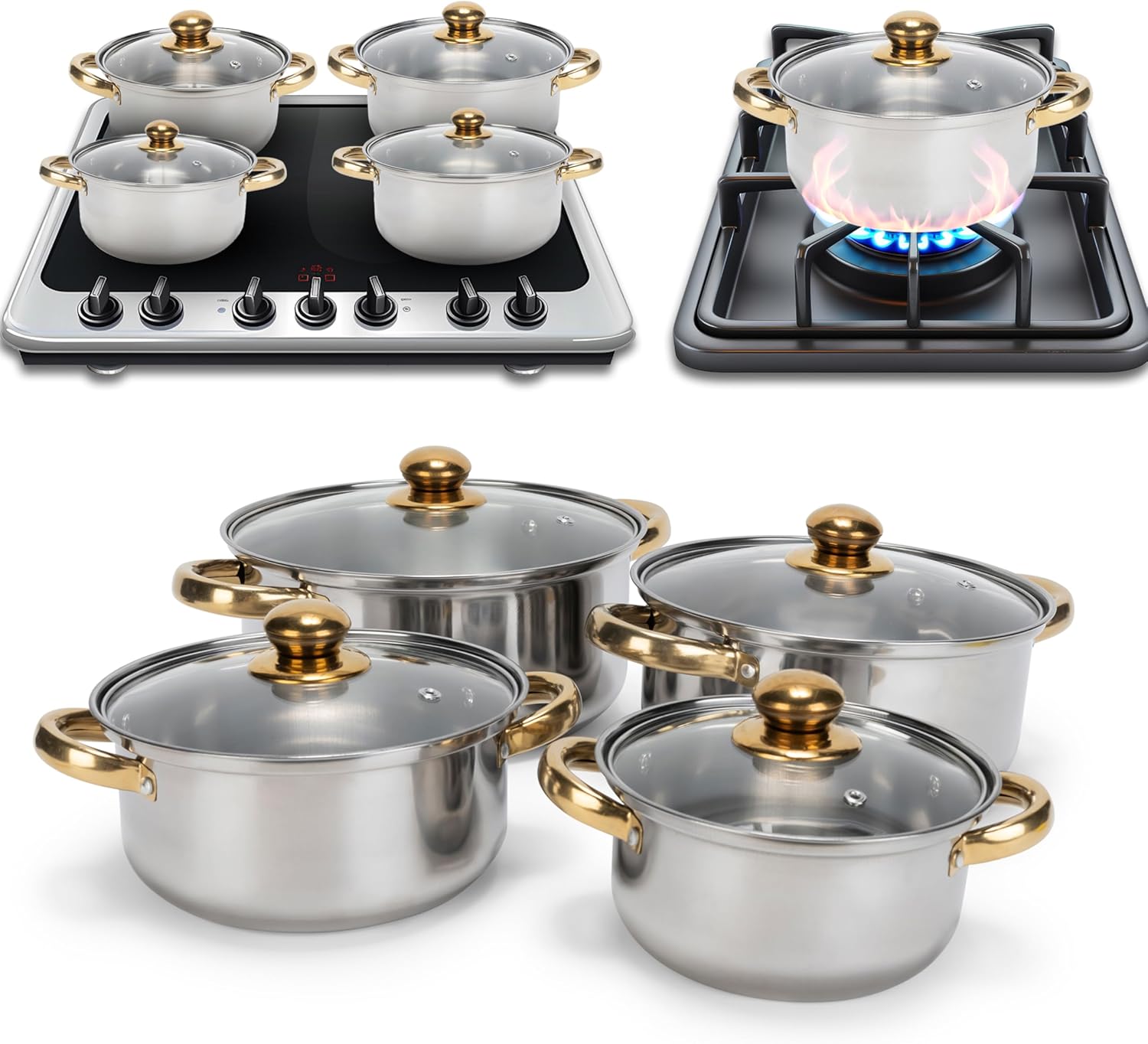

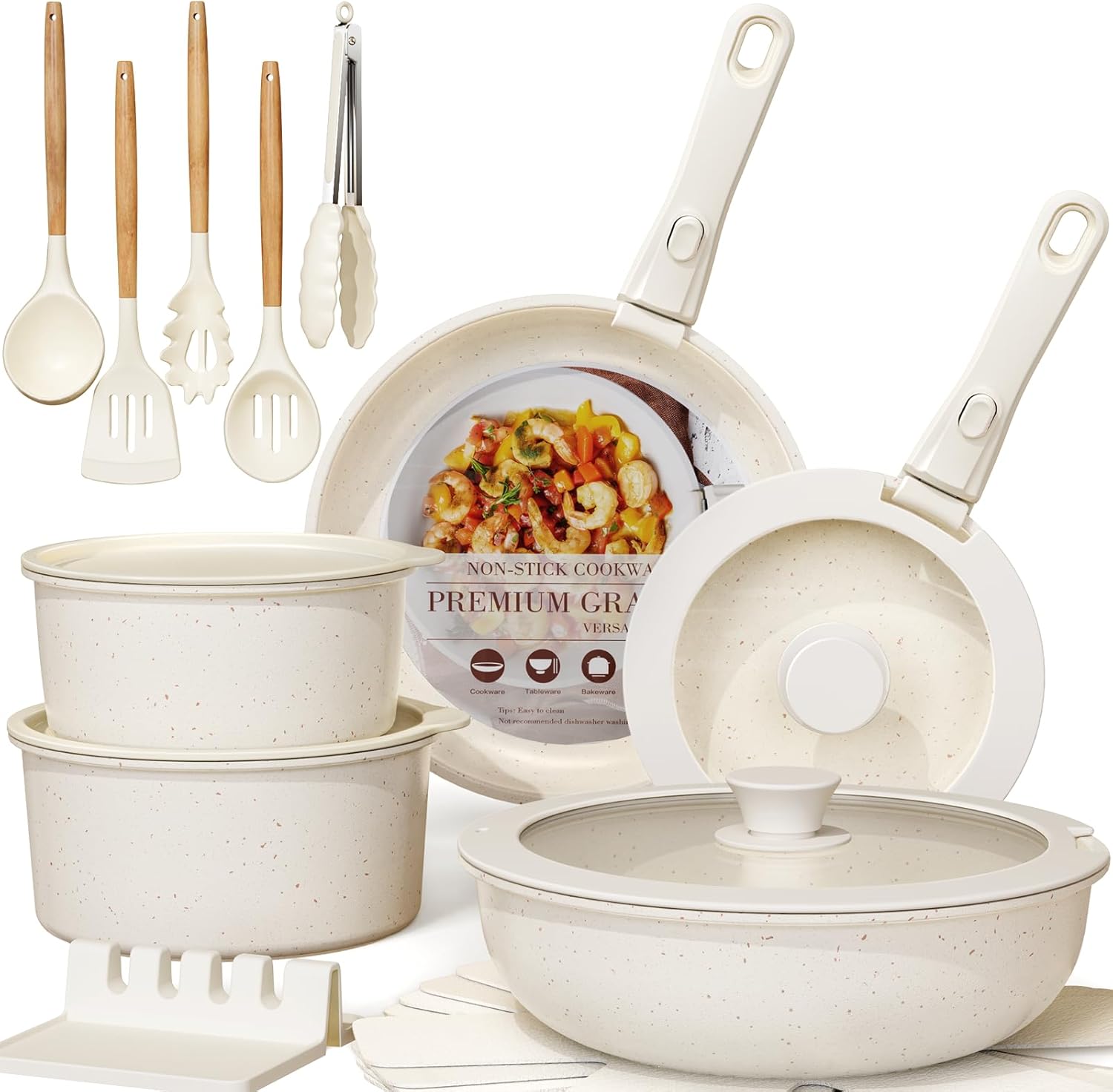
Leave a Reply